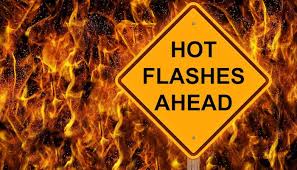Products You May Like

Good morning!
Canadians’ insurance bills are the highest in the OECD as a percentage of GDP, according to a new report by C.D Howe Institute.
“Canada’s auto, property and liability gross written premiums from 2015 to 2018 amounted to 2.7 per cent of its GDP on average, compared to an OECD average of 1.6 per cent and a G7 average of 2 per cent,” the think tank said in a new report published this morning.
All told, Canadians paid almost $50 billion — or around 2.3 per cent of GDP — between 2015 to 2018 in insurance premiums to private insurers for the three main lines of property and casualty insurance: liability, property and auto.
Canadians are paying w especially steep price for property insurance on average, accounting for 0.95 per cent of GDP in premium — more than twice the OECD average, authors Alister Campbell and Farah Omran wrote in their report.
The policy analysts acknowledged that GDP as a denominator in a cross-country comparison of insurance premiums is not ideal, but other benchmarks were not widely available across the jurisdictions. To strengthen the data, the analysts crunched four years of GDP data to reduce volatility, and believe that GDP captures the wealth of a nation and provides a metric for evaluating the scope of risk-bearing activity.
The two policy analysts attribute the high premiums in the country to a number of factors, including Canadians’ innate conservatism and prudence, regulations and government inadequacies.
The Office of the Superintendent of Financial Institutions requires a particularly high level of capital and reinsurance for insurers choosing to write property risks in disaster-prone areas relative to other developed jurisdictions.
“It is possible that Canada’s ranking by this metric is driven, at least in part, by this added price for prudence paid to cover the cost of the extra capital allotted to protect the system from insurer failure,” the authors said.
Canadians also pay the highest personal property rates in the OECD as a percentage of GDP, but a deeper dive into provincial rates shows remarkable disparity.
Residents of Ontario and Saskatchewan pay among the lowest personal property premiums in the country, while Nova Scotia and New Brunswick pay the highest, due to a combination of lower relative wealth and the natural catastrophes that often arrive at the shores of the Atlantic provinces.
“B.C., with its high earthquake and wildfire exposure, as well as Quebec with its high flood risk, also show results above the national average,” the authors noted.
Finally, Canadians on average pay higher costs for auto insurance than drivers in other OECD nations as a percentage of GDP. But it’s British Columbia, Ontario and Manitoba that are distorting the national average with their sky-high rates.
Interestingly, B.C. and Manitoba operate government-run monopolies, while Ontario has a highly-related private sector industry.
“This benchmarking analysis would indicate that, whether it is a government monopoly (as in BC) or simply an over-regulated private sector market (such as Ontario), the higher average premiums paid by citizens of those provinces and, therefore by Canadians on the whole (on average), are, at least in part, driven by ineffective government intervention,” Campbell and Omran concluded.
